Steve Khan's lead sheet:
"Where Shadows Meet"(Steve Khan)
When this website was first launched in September of 1998, one of my clear goals was to eventually have shared all of the original compositions from my own albums as a leader, along with other tunes of mine that had been recorded by other artists. It seems like it has taken forever, but with the posting of the newly revised lead sheet for "Where Shadows Meet" from "TIGHTROPE"(1977), this marks the last of those tunes. In truth, there is a very good reason for that, and sharing the story might provide some interesting insights for those who visit these pages regularly, as it has served to remind me of what happened when we recorded it.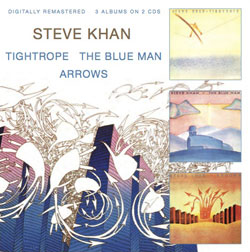 The April, 2015 BGO Records(UK) reissue of my 3 albums for Columbia Records has also helped to serve as an inspiration to finally get this done. The April, 2015 BGO Records(UK) reissue of my 3 albums for Columbia Records has also helped to serve as an inspiration to finally get this done.
When we went in to record "Where Shadows Meet" in the spring of 1977, I knew that I loved Latin music, but the truth is that, I really knew so little about it. So little that, in fact, the original lead sheet for this tune was actually written in 4/4(12/8) with triplets appearing virtually everywhere. I really did not understand or know that almost Latin tunes, like this one, would be written in 6/8. The lead sheet that I am now sharing with you was written recently, and fully embraces what I should have done way back when. That said, I cannot say enough about the wonderful performances of: Don Grolnick(Fender Rhodes & Organ); Will Lee(El. Bass); Steve Gadd(Drums); Ralph MacDonald(Percussion); and Bob James(Oberheim Polyphonic Synthesizer) and David Spinozza(Rhythm Guitar).
As I was preparing for this presentation, I was listening to this tune for the 1st time in many, many years, and I was struck by several things. One of the first things that caught my ear was that Bob James had intuitively and brilliantly used all of his orchestrational sensibilities when choosing a flute sound to double all the guitar melodies. This was absolutely the perfect color, and no doubt might have been the real instrument of choice, had I been recording with either Hubert Laws or Dave Valentín back then. Bob also added some wonderful colors during [I] and the [Tag]. Had we recorded the orchestrations live, I think that Bob's rhythmic accents in the Intro are things that, without question, Steve Gadd would have caught, and Don and Will would have observed them as well. I really appreciate hearing all this great work that Bob did!
If I might say a word or two about the brilliance of Steve Gadd, it is remarkable how he has such a great sense about what the right thing to do, musically speaking, always is. During this time in my musical development, there were many details that I could not be aware of, nor of how best to communicate them, but, had I known more then, I would have asked Steve to play in 6/8, but to give it a half-time feel. When we recorded this tune, no one had to say anything to Steve, he supplied that very feel by playing bass drum on the 2nd-half of the bar, or on beat 4 of the 6/8.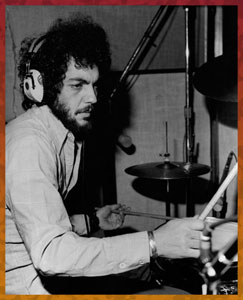 It's fantastic that he did that. His cowbell pattern on the bell, one that he always had mounted on his bass drum, really has nothing to do with the traditional Afro-Cuban 6/8 bell patterns. Steve was just inventing something based upon what felt best to him. When we arrive at [B] to mark the new section, he begins to play, what I would describe as, a tribal beat putting to use all of his tom-toms. The effect is a rise in the intensity level and, yet again, it demonstrates that, often times, if you leave the interpretation of your music to trusted bandmates, you might achieve far better results than trying to micro-manage every little detail. It's fantastic that he did that. His cowbell pattern on the bell, one that he always had mounted on his bass drum, really has nothing to do with the traditional Afro-Cuban 6/8 bell patterns. Steve was just inventing something based upon what felt best to him. When we arrive at [B] to mark the new section, he begins to play, what I would describe as, a tribal beat putting to use all of his tom-toms. The effect is a rise in the intensity level and, yet again, it demonstrates that, often times, if you leave the interpretation of your music to trusted bandmates, you might achieve far better results than trying to micro-manage every little detail.
While reviewing this track and the performance, as it always seems to be, my thoughts drifted to the wondrous playing of Don Grolnick. During these early years here in New York, I loved the contrast of the hard-hitting sounds from the guitar, bass and drums, but it was the contrast of the beautiful sounds of the Fender Rhodes, especially in the hands of a masterful accompanist like Don, that made the music so much more listenable. As I was writing out the new lead sheet, I knew that there had to have been little improvements that Don would have made to what was written, and so I tried to incorporate some of those little details into the part, really a mini-score, as it now exists. Throughout letters [A] and [B], I love the way Don incorporated little bits of the melodic movement into the Rhodes part that was filled with mostly dotted half-notes. In one place, bars 4 and 8 of [B2], Don justifiably ignored what I had written and just played a simple Dmaj7 voicing, because it must have been obvious to him that this was what sounded best. What I had written initially was a little too clever to have actually sounded good in the context of the performed music. Again, you must trust your musicians!!! During the guitar solo section, [D2], when we hit the last 8 bars of D7(9), and the flavor of the harmony takes on a much more R&B oriented feeling, Don had the good sense to add in a Hammond organ, the perfect touch at the right moment. During the 2nd chorus, for some reason, Will Lee and Steve Gadd went into a feel that was somewhere akin to swing for 8-bars. I have a recollection of this happening in a run-through, and the other players actually liked it much more than I did back then.
For each presentation of an old lead sheet from the Columbia years, 1977-79, generally speaking, while listening back,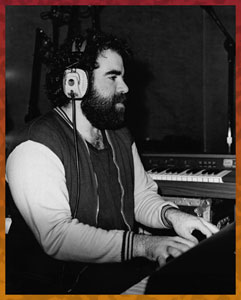 I could hear the wonderful little personal touches that Will Lee added to each tune, and his performance on "Where Shadows Meet" was no different. Fundamentally, Will stuck to the part that I had written for letter [A], but as Steve Gadd's feel expanded for the [B] section, Will's part began to vary from what had been originally written. At [B2], where Steve picked-up the intensity level and had added in all the tom-toms, Will's part again responded to those changes and you can see a difference, rhythmically speaking, how he varied the last half of each bar. To give the solo section, [D2], a sense of shape and development, Will played more long notes, but as the intensity level began to pick-up during the D/E chords, he became a bit more active. Don, Will and Steve Gadd hit full stride over the 4 bars of Fmaj7#4. And, as I had previously mentioned, during the last 8 bars of D7(9), to acknowledge the more R&B nature of the harmony, Steve switched to his hi-hat and Will, as always, adjusted to that change. These three masterful players never failed to contribute a beautiful sense of accompaniment to anything that I recorded during these years. I could hear the wonderful little personal touches that Will Lee added to each tune, and his performance on "Where Shadows Meet" was no different. Fundamentally, Will stuck to the part that I had written for letter [A], but as Steve Gadd's feel expanded for the [B] section, Will's part began to vary from what had been originally written. At [B2], where Steve picked-up the intensity level and had added in all the tom-toms, Will's part again responded to those changes and you can see a difference, rhythmically speaking, how he varied the last half of each bar. To give the solo section, [D2], a sense of shape and development, Will played more long notes, but as the intensity level began to pick-up during the D/E chords, he became a bit more active. Don, Will and Steve Gadd hit full stride over the 4 bars of Fmaj7#4. And, as I had previously mentioned, during the last 8 bars of D7(9), to acknowledge the more R&B nature of the harmony, Steve switched to his hi-hat and Will, as always, adjusted to that change. These three masterful players never failed to contribute a beautiful sense of accompaniment to anything that I recorded during these years.
The recorded version, that appears on "TIGHTROPE" is only 3:40 in length, and if one hadn't seen the original lead sheet, one would never know that a major edit had taken place. So, if you were now following along with the lead sheet, as presented here, the form would be as you see it directly below. However, just to be clear, as all the soundclips presented here at the website are of course edited, I decided to make this clip so that, when we arrive at the end of [B2] at the top of Pg. 3, we take the Coda and go directly to Pg. 5, and play down the page through the [Tag] and right to the end. Again, this is only for the soundclip presented here at KORNER 2.:
[I]
[A]
[B]
[B2]
[D]
[D2] - Solo
[D2] - 2nd Chorus
[B2]
[A]
[B]
[B2]
[B2]
[Tag] - End
The written version, as it appears here on these pages, is actually the full version, as the piece was originally intended to be played. You can't help but see that Letter [C] had been edited out, and the [B] and [B2] sections that were to have followed were also edited out. In other words, we cut directly from the end of the [B2] section, and went directly to the two Solo Break bars, which I have now labeled as Letter [D]. So the question becomes, what went so wrong that you felt that you had to edit out all of [C]?
In part, this accounts for why the recorded version of "Where Shadows Meet" was so short when it first appeared on the LP.:
[I] - 4x
[A]
[B]
[B2]
[C]
[B]
[B2]
[D]
[D2] - Solo
[D2] - 2nd Chorus
[B2]
[A]
[B]
[B2]
[B2]
[Tag] - End
As the [C] section was written, everyone, except me, played it great! However, I believe that back then, I really did not understand how to write out what would have captured the rhythmic sense and feeling that I wanted to communicate. The truth is that I wanted to cross from the 6/8 to what feels like 4/4 by placing the emphasis on the dotted 8th notes.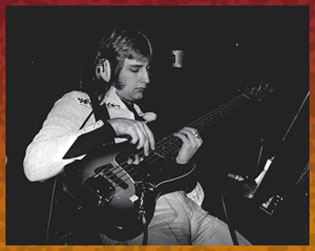 In a bar of 6/8, there are 4 dotted 8th notes, and that is where the feeling comes from. In 1998, when Rob Mounsey and I recorded our album, "YOU ARE HERE," we co-wrote many of the tunes, and one of them was titled, "Peanut Soup." During the piece, after Rob's great solo, we wrote a unison "shout" section that appears at about 5:07, if you have the recording, you can hear a perfect example of this kind of rhythmic transition. The only difference is that I believe that Rob saw the piece as being written out in 3/2, as opposed to 6/8, though I think that most Latin musicians would have written it out in 6/8. As I sit here today, IF I was going to re-record "Where Shadows Meet," I would write a completely new [C] section. It would be my sense that it would appear before the solo section, and then be reprised immediately following it. I am also pretty certain that I would repeat [A]-[B]-[B2] at the top of the tune. It feels strange to me that we did not do that originally. In a bar of 6/8, there are 4 dotted 8th notes, and that is where the feeling comes from. In 1998, when Rob Mounsey and I recorded our album, "YOU ARE HERE," we co-wrote many of the tunes, and one of them was titled, "Peanut Soup." During the piece, after Rob's great solo, we wrote a unison "shout" section that appears at about 5:07, if you have the recording, you can hear a perfect example of this kind of rhythmic transition. The only difference is that I believe that Rob saw the piece as being written out in 3/2, as opposed to 6/8, though I think that most Latin musicians would have written it out in 6/8. As I sit here today, IF I was going to re-record "Where Shadows Meet," I would write a completely new [C] section. It would be my sense that it would appear before the solo section, and then be reprised immediately following it. I am also pretty certain that I would repeat [A]-[B]-[B2] at the top of the tune. It feels strange to me that we did not do that originally.
All of this begs the question, what happened? Why did you feel that you had to do such radical surgery on your original conception of the piece? Of course, over the now 38 years that have passed since the recording, many factual memories of that day have sadly faded away. But, I would begin by telling you that sometimes, when one is preparing a composition and the arrangement of that composition for a recording, you are often alone at home, in some kind of a workspace, and you are hearing the music in a vacuum. Remember, during those years, none of the home recording 'tools' that we all take for granted today existed. So, though I had a vision for Letter [C], when we began to actually play it, it just never felt right to me. Everyone else at the session played the parts great, just as they saw them, but, something was amiss for me, and I felt awful about what I was hearing, but did not have the skills then to have come-up with an alternate solution so as not to lose the section entirely. In truth, it was a very, very embarrassing moment for me.
From the harmonic perspective, though I wrote out the [A] section and labeled the 1st chord as Dbsus, because the voicing, spelling-up only has: Db-Gb-Ab-Db in it. When I look at the principal melody, it is really coming from Db Phrygian[Db, Ebb(D), Fb(E), Gb, Ab, Bb, Cb]. Obviously, it is far easier to write D-natural and E-natural than to use Ebb and Fb, so that is what you now see.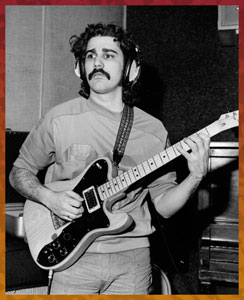 The Spanish flavor of the melody and harmony continues as the following chord is Dmaj7(6). So much wonderful Spanish and Flamenco music utilizes similar harmonic movements. In the right hand of the Rhodes part, you see that the voicing is configured in very much the same way as the first chord, spelling-up here you have: B-E-F#-B. You can see that the intervals are the same. Originally, I had labeled this chord with #4 in it, but I have no idea as to why I did that, when G# never appears in the melody. However, 4 bars later, when Dmaj7#5(F#/D) is the chord, both A# and G# appear in the 2nd bar, and are colored by the Rhodes. In many ways, as it often should be, the melody really guides the harmony rather than that there were chords, and a melody was composed to fit those chords. Listening back, after all these years, the piece has a very organic feel to it, because the melodies speak so clearly. The Spanish flavor of the melody and harmony continues as the following chord is Dmaj7(6). So much wonderful Spanish and Flamenco music utilizes similar harmonic movements. In the right hand of the Rhodes part, you see that the voicing is configured in very much the same way as the first chord, spelling-up here you have: B-E-F#-B. You can see that the intervals are the same. Originally, I had labeled this chord with #4 in it, but I have no idea as to why I did that, when G# never appears in the melody. However, 4 bars later, when Dmaj7#5(F#/D) is the chord, both A# and G# appear in the 2nd bar, and are colored by the Rhodes. In many ways, as it often should be, the melody really guides the harmony rather than that there were chords, and a melody was composed to fit those chords. Listening back, after all these years, the piece has a very organic feel to it, because the melodies speak so clearly.
As we arrive at [B], we have the nice contrast of a section that is fundamentally more major in orientation, and the voicing for Fmaj9/6 is, yet again, the same intervallic configuration, spelling-up: D-G-A-D. These sonorities continue to have a great importance in coloring the tune during [B2] as well. In bar 1, we have the same Dbsus sonority that began the tune, and that same sound with the same notes, but it is now spelled: C#-F#-G#-C# and appears with 'A' in the bass, and the chord becomes Amaj7(6). In bar 4 of this section over 'E' in the bass, the same configuration of notes becomes Emaj9(6). By simply changing the bass notes, you open-up other lush harmonic colors. To add emphasis to that bar, you can hear Steve Gadd accentuating all the dotted 8th notes, giving the sense of playing 4/4 against the 6/8. Will Lee's wonderful bass playing acknowledges this rhythmic change by making a subtle movement in his bass part in the 1st half of that bar. This, of course, he did on his own, with no prompting from me. One would expect no less from such a musical person as Will.
In the end, the great lesson in all of this for me was that, I did not prepare this piece, "Where Shadows Meet" well enough to have been fully aware of every eventuality that I might face when recording it. Though I haven't reviewed my datebook for 1977 to see if we had more than one rehearsal or not, whatever the allotted amount of time was, it could not have been enough.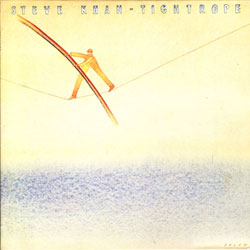 To have lost letter [C] because of poor preparation on my part is inexcusable! If this same thing was happening today, I would certainly use all the available technology to prepare and, at the rehearsals, make certain that every detail was in order. Needless to say, the easiest thing to do is to simply make a really good, serviceable demo. When that is done, one has to play along with it often to make certain that it actually feels good to you. Having done that, you can then check and re-check the written parts to be certain that there are no notation errors or structural errors. Then, you just have to be prepared for the rehearsals and one or several of the musicians telling you that something could be improved by just making a small change here or there. Usually, it is unavoidable that this will happen, because your fellow players also have valuable experience and superb musical instincts, and you also have to trust those things! To have lost letter [C] because of poor preparation on my part is inexcusable! If this same thing was happening today, I would certainly use all the available technology to prepare and, at the rehearsals, make certain that every detail was in order. Needless to say, the easiest thing to do is to simply make a really good, serviceable demo. When that is done, one has to play along with it often to make certain that it actually feels good to you. Having done that, you can then check and re-check the written parts to be certain that there are no notation errors or structural errors. Then, you just have to be prepared for the rehearsals and one or several of the musicians telling you that something could be improved by just making a small change here or there. Usually, it is unavoidable that this will happen, because your fellow players also have valuable experience and superb musical instincts, and you also have to trust those things!
I wish that I actually knew or understood what the motivating factor was for Andy Gray and BGO Records to have decided that they were going to package my three Columbia albums together on 2 CDs for a reissue. I just know that I am very grateful that it happened. As I have written in several pages at this website, when one does not own their recordings, the artist has no rights, where being informed of any plans the parent label might have are concerned. Fans tend to think that we, as artists, have something to say about all this, but, we do not!!! So, for all I know, this could be the last chance that fans of this music will have to own these recordings and these performances on an actual CD. I have done everything possible to try to make the audio sound as good as it can, and to have the look of the package be relatively consistent with what fans have come to expect from me. I am hoping that everyone will be pleased with what they see and hear. One example of a most generous "bonus" from BGO Records was that they gave this reissue a 24-page CD booklet that includes 12 pages of liner notes! No one was more surprised about that than me!!!
[Photos: Steve Gadd; Don Grolnick; Will Lee; and Steve Khan
taken by Chuck Stewart '76]
|

